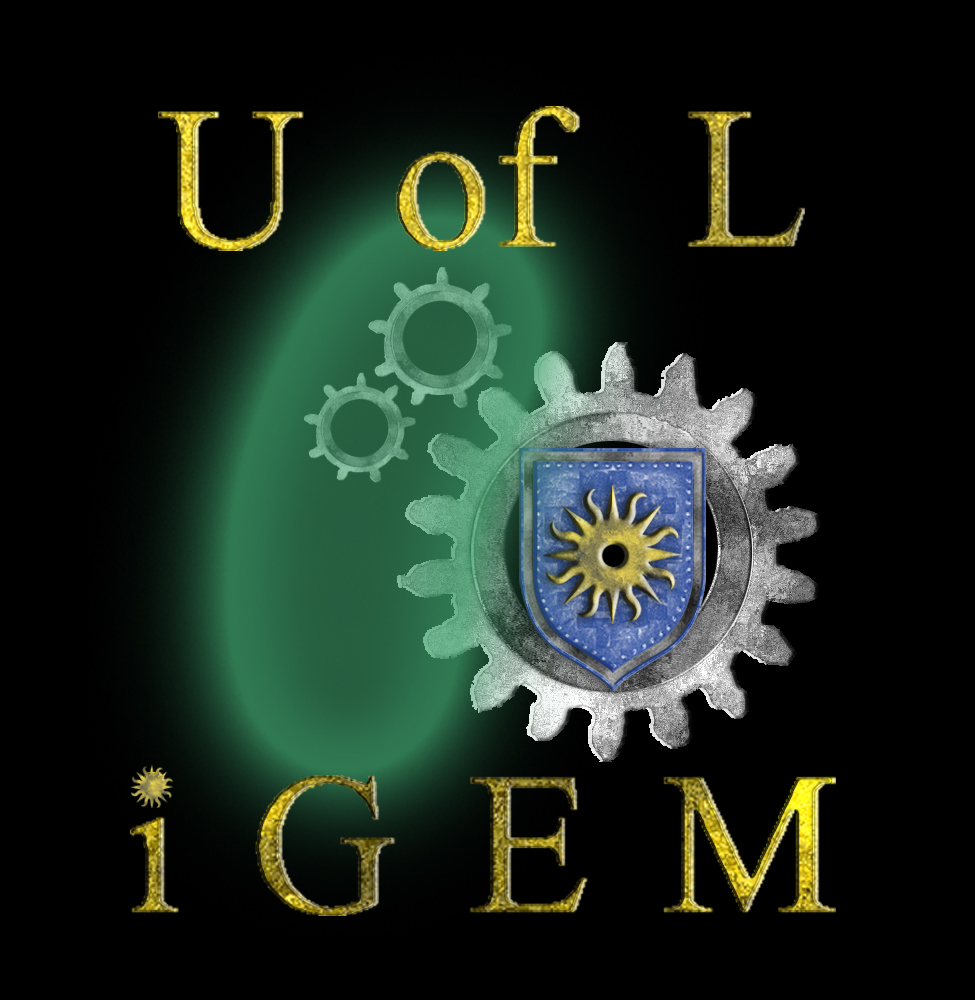Team:University of Lethbridge/Modeling
From 2008.igem.org
(updated versions of figures - still need to choose final version) |
(put in HJ's version of figure) |
||
| Line 36: | Line 36: | ||
For our project, we decided to create a synthetic bacterium which could move towards and degrade an environmental pollutant. To direct the movement of our modified "Bacuum Cleaner," we reprogrammed the chemotaxis pathway by using a toxin-responsive riboswitch to control expression of the motility protein CheZ. CheZ catalyzes the dephosphorylation of the motility protein CheY, which promotes directed movement (chemotaxis) over the "tumbling" state of the bacterium. | For our project, we decided to create a synthetic bacterium which could move towards and degrade an environmental pollutant. To direct the movement of our modified "Bacuum Cleaner," we reprogrammed the chemotaxis pathway by using a toxin-responsive riboswitch to control expression of the motility protein CheZ. CheZ catalyzes the dephosphorylation of the motility protein CheY, which promotes directed movement (chemotaxis) over the "tumbling" state of the bacterium. | ||
| - | We used the modeling program BCT (ref) to determine the level of ''CheZ'' gene expression necessary to produce dephosphorylated CheY and directed movement. Increasing intracellular concentrations of CheZ leads to increased CheY in the unphosphorylated state (Figure | + | We used the modeling program BCT (ref) to determine the level of ''CheZ'' gene expression necessary to produce dephosphorylated CheY and directed movement. Increasing intracellular concentrations of CheZ leads to increased CheY in the unphosphorylated state (Figure 1)... |
---- | ---- | ||
| + | [[Image:Chez_hjfigure.jpg|400px]] | ||
| - | + | <font color=white> Figure 1 | |
| - | + | ||
| - | + | ||
| - | + | ||
| - | + | ||
| - | + | ||
| - | + | ||
| - | + | ||
| - | + | ||
| - | + | ||
| - | + | ||
| - | + | ||
| - | + | ||
| - | + | ||
| - | + | ||
| - | + | ||
| - | + | ||
Revision as of 14:44, 29 October 2008
Our Project
For our project, we decided to create a synthetic bacterium which could move towards and degrade an environmental pollutant. To direct the movement of our modified "Bacuum Cleaner," we reprogrammed the chemotaxis pathway by using a toxin-responsive riboswitch to control expression of the motility protein CheZ. CheZ catalyzes the dephosphorylation of the motility protein CheY, which promotes directed movement (chemotaxis) over the "tumbling" state of the bacterium.
We used the modeling program BCT (ref) to determine the level of CheZ gene expression necessary to produce dephosphorylated CheY and directed movement. Increasing intracellular concentrations of CheZ leads to increased CheY in the unphosphorylated state (Figure 1)...
Figure 1
</div>
 "
"

 ]
]
 ]
]
 ]
]
 ]
]
 ]
]
 ]
]
